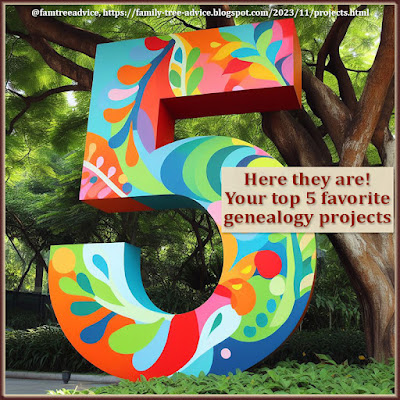I've had tons of success identifying and learning important facts from my DNA matches. Here are 4 articles featuring the most successful methods to use.
I left one article off this list: "Use Color-Coding to Solve Mystery DNA Matches." This otherwise powerful technique doesn't work with endogamous families like mine. But it's well worth a look if your tree is not endogamous.
Endogamy is the practice of marrying within your own culture, ethnic group, town, etc., for centuries. This "muddies" your results. Different branches of your family tree will have very similar DNA.
These 4 articles represent the best ways to work with your DNA matches to fortify your family tree.
 |
| Are you getting all you can from your DNA matches? These 4 methods can really help. |
1. 3 Key Steps to Identify a DNA Match
This article explains how to figure out your mystery DNA match by:
- Looking at your shared DNA matches.
- Searching their trees for familiar last names. (Notice I said familiar names, not your name.)
- Doing their research for them (but it's actually for you).
It's a method you can repeat over and over with positive results.
2. Digging Into a DNA Match's Family Tree
This article is a practical case study that expands on the article above. Don't waste your time on matches with no family tree or a useless family tree. Find matches with at least a couple of generations to their trees and search for a solid entry point. Find out how you can do this with your DNA matches.
3. Why Care About Your DNA Matches?
Your very distant DNA matches can still add value to your family tree. You may not know what became of your 2nd great grandfather's brother, but your distant cousin may. Here's how you can use your DNA matches to find lost relatives and missing families.
4. How to Use DNA Matches to Go Beyond Vital Records
I have a completely insane family tree—and not for the reason you may be thinking. My ancestors came from isolated towns, intermarrying like crazy. That means I can find some connection to everyone from each town. I'm using the Antenati website to piece together my connection to everyone from my towns. I have 72,000 people right now, and I'm far from done.
The only problem is, lots of documents are not available. In my towns, there are no death or marriage records from 1861–1930, births end in 1915, and there's nothing after 1942. The great value of DNA matches is that their personal knowledge can bridge that document gap. I especially love it when their trees can prove that two people already in my tree married one another. I had no way to know that, but now I do!
Follow this simple method and harvest the relationships you never knew existed.
I've had so much success with the Antenati website that it'd take pre-1809 church records for me to go any further. Now and then I choose a few more DNA matches to explore. The hope is that someday I'll find a distant cousin who has already seen those old church records!
 |
| A 15% discount for readers of Fortify Your Family Tree! |

